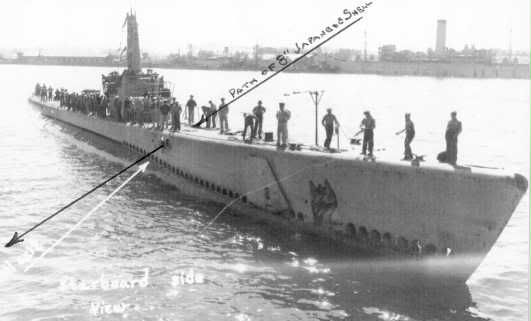Hey onboard! What can you tell me about implementing effects close to this one?
http://en.wikipedia.org/wiki/File:Mark_48_Torpedo_testing.jpg
Regards.
http://en.wikipedia.org/wiki/File:Mark_48_Torpedo_testing.jpg
Regards.
Nothing more simple than open Google and type "torpedo hit"Well, to be honest I haven't been hit by a heavyweight torpedo that often, so I can't really tell.


Rockin Robbins said:REMEMBER THIS: USS BERGALL?
On the evening of Dec. 13, 1944 as Bergall (Hyde) was preparing to plant mines off Indo-China, she picked up a distant radar contact. Closing to 26,000 yards, the contact was tentatively identified as 2 cruisers, later determined to be a cruiser and destroyer escort. After attaining a firing position 3300 yards away from the overlapping targets, six bow tubes were fired. Moments later a tremendous explosion occurred, seemingly, breaking the Imperial Japanese heavy Myoku in two. Hauling clear to reload when the escort seemed reluctant to attack, Bergalll charged in for a second attack when, at 9000 yards, the escorting destroyer opened fire, one shell landing in Bergall's wake, another directly into her forward torpedo loading hatch, opening a large hole in her pressure hull. Retreating at full speed. Bergall hauled clear only to find that the damage was beyond repair at the scene, 2000 miles from the nearest friendly port, Exmouth Gulf, Australia. When reporting the problem to Admiral Christie Cdr. Hyde was ordered to rendezvous with Angler, Bashaw and Paddle, remove the crew and destroy Bergall. After carefully reviewing the situation, Cdr. Hyde decided to disobey this order and try to take Bergall home through Karimata, the Java Sea and Lombok on the surface. He removed one officer and 54 men to the Angler, destroyed all confidential gear, set demolition charges by her torpedoes and mines and got underway for Exmouth Gulf, Angler following closely, standing by to remove personnel from Bergall if danger threatened. Five days later, they arrived at Exmouth Bay on 20 December 1944.
First notice that the destroyer escort, identified at the time as a cruiser (!!!), tossed two shells out there from 9,000 yards. One landed in Bergall's wake but the other scored a critical hit. Think about that next time you complain about Japanese ships being too accurate in SH4. Ain't so! So what does "a large hole in the pressure hull" "beyond repair at the scene" and requiring Bergall to travel on the surface for 2,000 miles to get home really look like?
As luck would have it a man stood on the dock with a camera upon Bergall's arrival at Exmouth Gulf. You can see the "major damage" from a Japanese 8" shell (much larger than anything a submarine could fire!) had to be delineated by drawing an explanatory line on the photo! Without it, I doubt you could have found the major damage that kept that sub from submerging, even to periscope depth!

